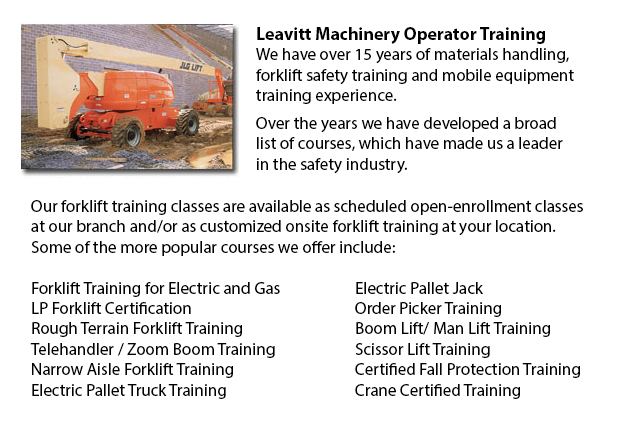
Boom Lift Safey Training Glendale - Boom lifts are a kind of elevated work platform or aerial lifting device that are normally utilized in warehousing, construction and industry. Boom lifts can be made use of in almost whatever setting due to their versatility.
Elevated work platforms allow workers to get into work areas that would be unreachable otherwise. There is inherent danger in the operation of these devices. Employees who operate them must be trained in the right operating procedures. Accident prevention is paramount.
The safety aspects that are included in using boom lifts are included in our Boom Lift Training Programs. The course is best for those who operate self-propelled elevated work platforms and self-propelled boom supported elevated work platforms. Upon successfully finishing the course, Those who participated will be issued a certificate by a person who is licensed to verify the completion of a hands-on assessment.
So as to help train operators in the safe utilization of elevated work platforms, industry agencies, federal and local regulators, and lift manufacturers all play a part in establishing standards and providing the necessary information. The most important ways in avoiding accidents connected to the use of elevated work platforms are as follows: putting on safety gear, performing site assessment and checking machinery.
Important safety considerations when operating Boom lifts:
Operators have to observe the minimum safe approach distance (or also called MSAD) from power lines. Voltage could arc across the air to be able to find an easy path to ground.
In order to maintain stability when the platform nears the ground, a telescopic boom needs to be retracted prior to lowering a work platform.
Boom lift workers must tie off to guarantee their safety. The lanyard and safety tools should be connected to manufacturer provided anchorage, and never to other wires or poles. Tying off may or may not be necessary in scissor lifts, that depends on specific job risks, local rules, or employer guidelines.
The maximum slope will be specified by the manufacturer. Workers should avoid working on a slope, if possible. When the slope exceeds recommended situation, the lifting device should be winched or transported over the slope. A grade can be simply measured by laying a straight board or edge of at least 3 feet on the slope. After that a carpenter's level could be laid on the straight edge and raising the end until it is level. The per-cent slope is attained by measuring the distance to the ground (also called the rise) and dividing the rise by the length of the straight edge. Next multiply by one hundred.
-
Aerial Lift Train the Trainer Glendale
Aerial Lift Train the Trainer Glendale - The Aerial Lifts Train the Trainer Certification Program will teach trainers how to effectively train operators in safe industrial mobile machine operation. Trainers are given in-depth instruction on aerial li... More -
Forklift License Glendale
Forklift License Glendale - In North America, acquiring a forklift license or forklift certification involves hands-on and classroom training. Regulatory control over certification, training and license for powered industrial truck operators falls un... More -
Telehandler Certification Glendale
Telehandler Certification Glendale - Telehandler certification programs are both for operators who have some experience driving a typical forklift and for individuals with no experience. The real-world training provided by these courses produces grad... More -
Operator Safety Training and Re-Qualification Training and In-House Instructor Training in Glendale
Forklifts are used in almost all warehouse operations and in boat yards and in industrial construction sites. The reach feature of a forklift is a very important component utilized in a variety of applications like for example when a shelving system... More -
Manlift Training Glendale
Manlift Training Glendale - Different manlift training programs include the content and review of manlift devices. An important portion of the program is the practicum where students show their practical ability and knowledge to safely operate a manl... More -
Crane Certification Glendale
Crane Certification Glendale - The Crane Certification Program consists of the industry suggested subject matter which will teach the safe and efficient operation of cranes. The individual would train in the following: how to identify cranes and thei... More -
Loader Ticket Glendale
Loader Ticket Glendale - Gehl articulated loaders have been made to suit practically every condition. They offer optimal maneuverability and great traction due to a heavy-duty oscillating joint that provides 45-degree rotating angles right and left,... More -
Crane Ticket Glendale
Crane Ticket Glendale - The new version of a crane could be either simple or complex, and cranes vary based on their use. Mobile cranes, for instance are rather simple. A telescopic boom or steel truss mounts its movable platform. A system of levers... More

Forklift Training Glendale
TOLL FREE: 1-888-254-6157
Glendale, Arizona
forkliftcertificationglendale.com
Email Us
About Us


